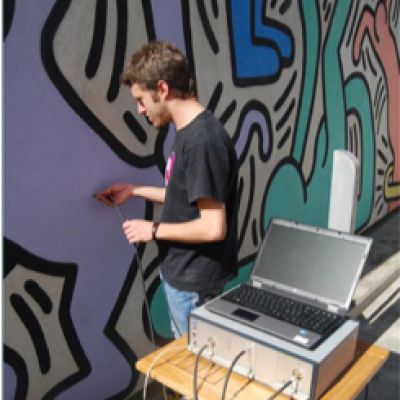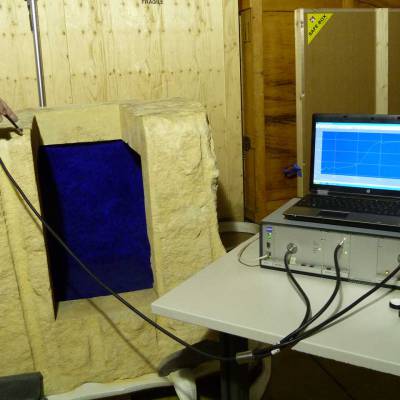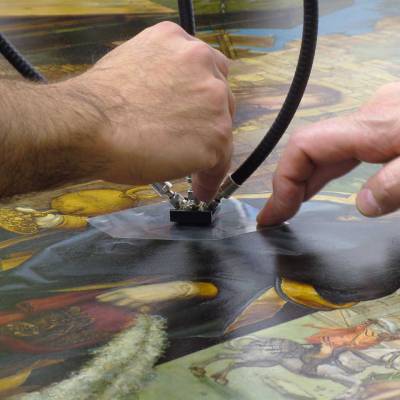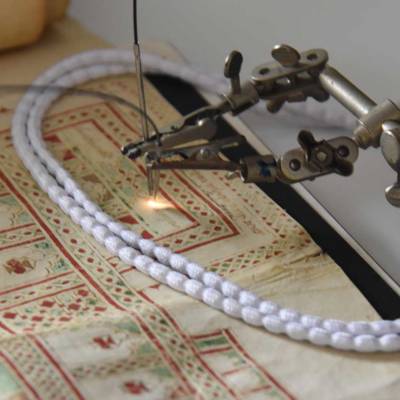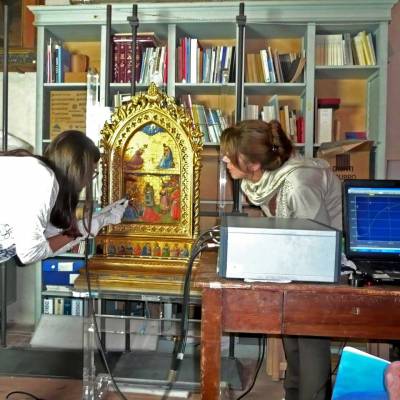FORS
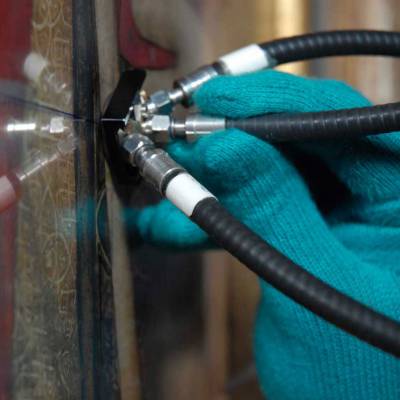
Fiber optic reflectance spectroscopy (FORS) in the ultraviolet (UV), visible (Vis) and near infrared (NIR) spectral regions is a non-invasive methodology applied to the analysis of artworks. In the UV-Vis-NIR range, electronic and vibrational transitions can be observed. FORS is primarily used to identify pigments and dyes, evaluate colour and colour changes, and to detect alteration products. Moreover, the reflectance spectrum in the Vis range is the basis of colorimetric analysis, which is exploitable to monitor color changes (discoloration, yellowing, darkening, etc.) due to the aging processes. FORS is implemented with portable spectrophotometers and spectro-analyzers equipped with optical fibers accessories. Thanks to the flexibility of optical fibers, any point of the object can be easily measured without constraints due to size or shape of the artwork. Two Zeiss spectro-analyzers, MCS 601 (190-1015 nm range) and MCS 611 NIR 2.2 WR (910-2200 nm range) models, are housed together in a compact and portable chassis, ideal for in situ analyses on different type of artworks. The radiation is provided by a voltage-stabilized 20W halogen lamp (mod. CLH600). The radiation is sent to and collected from the investigated area by means of quartz optical fiber bundles. Beside applications on historical objects, FORS is also used on the analysis of modern and contemporary artworks. It is a very useful tool, in conjunction with other techniques (XRF, FT-IR, Raman, etc.) for locating areas for micro-sampling, or in extending local data from micro-analyses to a broader scale, thus reducing the extent of micro-sampling.

